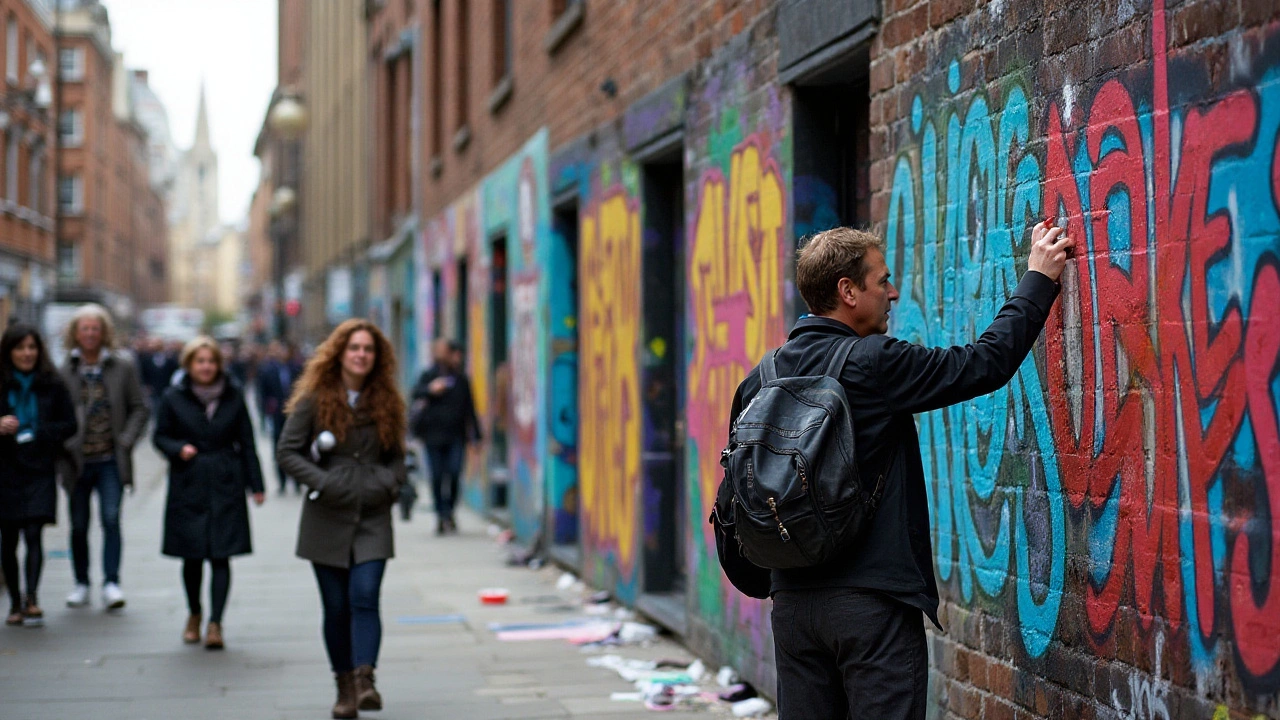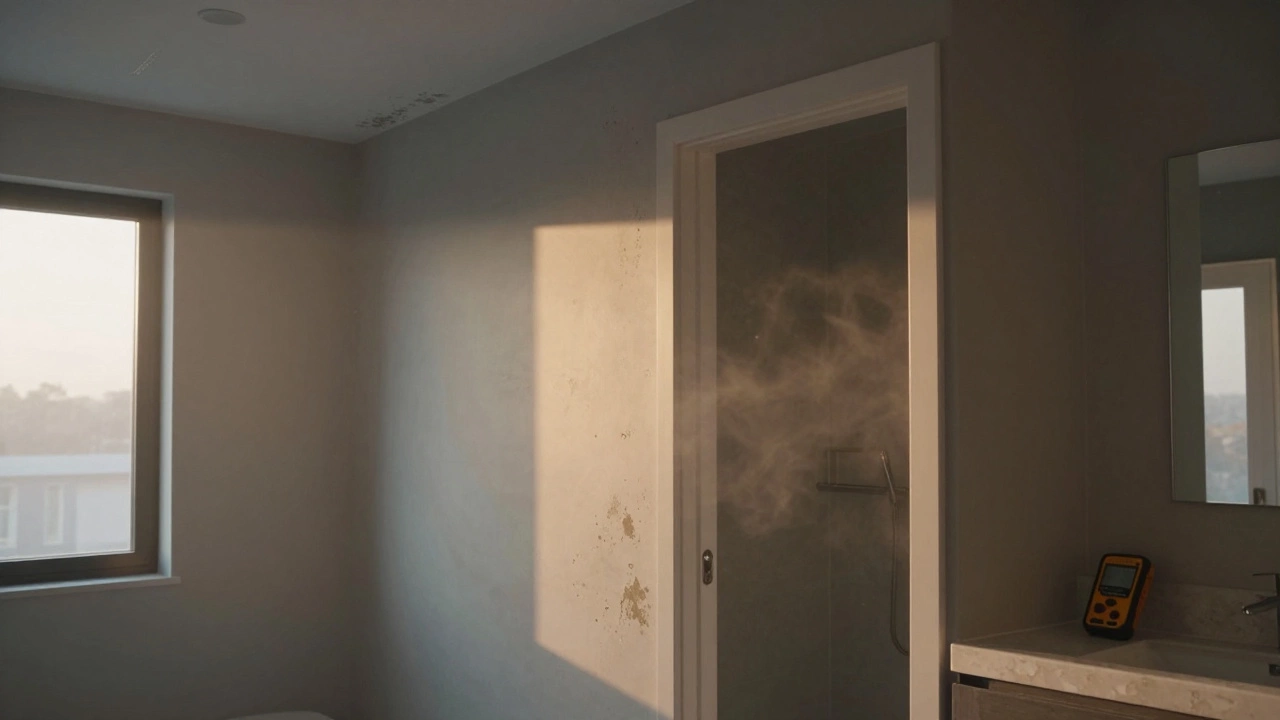Graffiti has long been a contentious topic, straddling the line between art and crime. It's a form of expressive wall art that you’ll find in bustling city alleys as well as quiet suburban backstreets. While some people herald it as a celebration of urban culture and free expression, others view it as an act of vandalism that defaces property.
Communities around the world have grappled with the presence of graffiti, leading to a patchwork of laws and regulations that vary widely. But what really defines graffiti as illegal? Is it purely a matter of permission, or does the intent behind the spray paint matter too? As we navigate through this labyrinth of legal intricacies, we also delve into the mixed perceptions surrounding this polarizing art form.
- The Legal Landscape of Graffiti
- Cultural Significance and Public Perception
- Consequences of Illegal Graffiti
- Balancing Art with Legal Boundaries
The Legal Landscape of Graffiti
Graffiti occupies a curious position within the legal system, where its status can swing wildly between artistic recognition and dubious legality. The rules governing wall graffiti are largely dependent on the context and jurisdiction, making for a complex tapestry of laws. For instance, in some cities such as New York, there are certain zones where artists are encouraged to express themselves, whereas in others, any unauthorized mark is met with strict penalties. This contrast speaks volumes about the legal perception and acceptance of graffiti across various regions. According to the legal tenets in many Western countries, graffiti on private or public property without explicit permission is typically deemed illegal. This is usually classified under vandalism, a charge that can result in fines or even imprisonment.
Internationally, graffiti laws can range from the laissez-faire approach of Bristol, England—home of the famous street artist Banksy—to the stringent regulations in Singapore, where unauthorized graffiti might lead to caning. It's noteworthy that in many places, the fine line between legal and illegal graffiti often comes down to permission. This creates an intriguing dynamic where commissioned murals or public artworks are celebrated, whereas unsanctioned pieces may lead to legal consequences. This difference isn’t mere semantics—it's the difference between crowd-gathering art and a criminal act. According to a former city prosecutor, "Graffiti's legality often hinges not on the content, but on the context and consent."
Some cities have started to embrace graffiti as a cultural asset rather than an issue to be eradicated. Establishing legal walls, often termed as open-air galleries, allows artists to showcase their talents in a legitimate setting. Such initiatives also help in reducing illegal graffiti, while bolstering community engagements and tourism, hence adding an economic incentive to regulate rather than blanket-ban this form of art. These developments pioneer a middle ground, offering artists a platform for expression without necessarily breaking the law. Given these varying stances, it's evident that the legal landscape of graffiti is as multifaceted as the art itself, requiring both artists and policymakers to navigate its intricacies carefully.
The Role of Public Perception in Legal Decisions
Public sentiment plays a crucial role in shaping how graffiti is legislated. In places where street art is seen as a manifestation of cultural identity or revitalization, laws tend to be more lenient or adaptive. For instance, Berlin, renowned for its vibrant street art scene, has areas where graffiti is not only tolerated but actively encouraged. This points to a growing recognition of graffiti's potential to beautify urban environments and promote tourism. However, in cities where graffiti is seen predominantly as a threat to property values or public order, the laws tend to be more prohibitive. These opposing views highlight the subjective nature of graffiti legality, with legal responses often mirroring societal attitudes.
Interestingly, a survey in 2022 revealed that about 60% of respondents in urban areas supported legal frameworks that differentiate between artful graffiti and deliberate vandalism. Such survey results underscore a shifting public perception that acknowledges the artistic and cultural contributions of graffiti when appropriately managed. Both municipal authorities and graffiti artists have much to gain from an open discourse that respects legal norms while celebrating creativity. The challenge lies in crafting laws that protect property rights without stifling the entrepreneurial spirit of wall artists. This balance is crucial for enabling cities to thrive as vibrant hubs of culture, where art can flourish without stepping on legal boundaries.
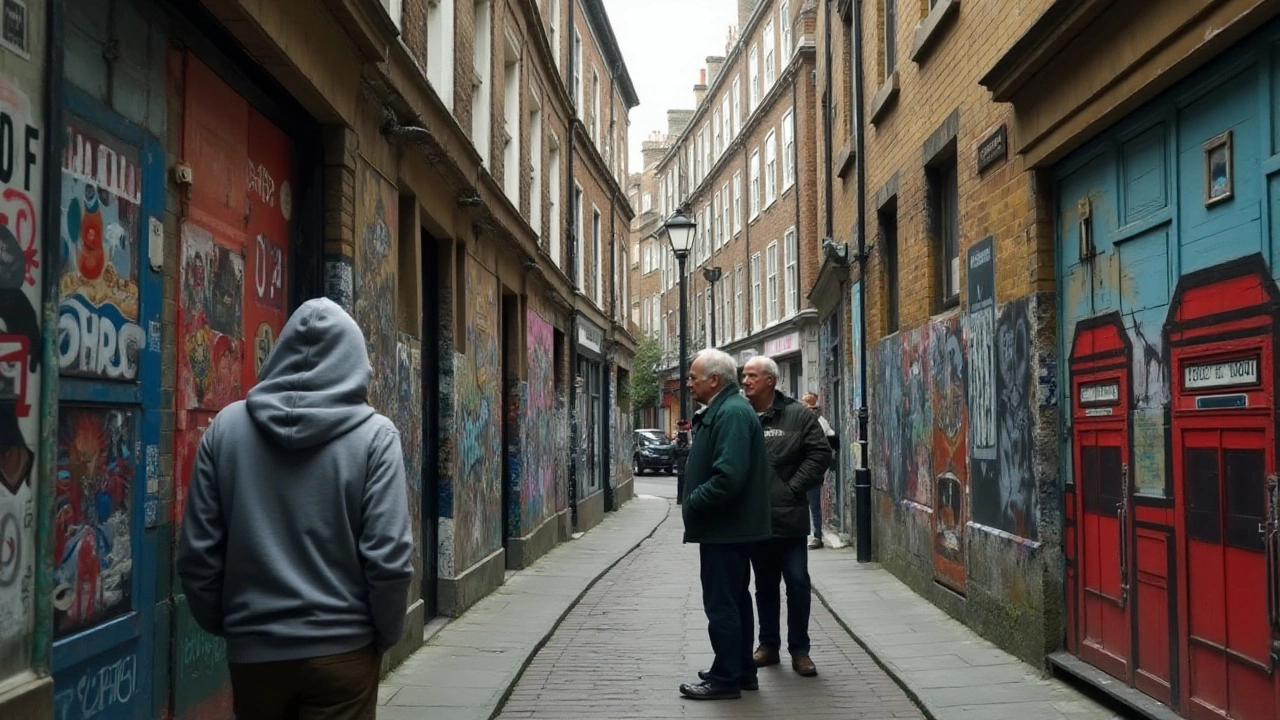
Cultural Significance and Public Perception
Graffiti has always been more than just spray paint on a wall; it is woven into the very fabric of urban life. Many artists use wall graffiti as their canvas to communicate social and political messages that might otherwise go unheard. This vibrant form of street art can serve as a mouthpiece for marginalized voices, capturing the raw essence of a community's spirit and struggles. From the bold declarations of rebellion in the 1970s to the intricate murals highlighting local heroes today, graffiti encapsulates a spectrum of emotions and experiences. As it challenges the norms, it has morphed into an art form that not only reflects society but influences it profoundly. People often find themselves at crossroads, either embracing these vivid urban canvases as landmarks of local culture or decrying them as an eyesore marring cityscapes.
The way folks perceive graffiti can vary wildly, not just across regions but within a single city block. While one person might see a vividly painted mural as a tourist attraction, another might perceive the same piece as property damage. This dichotomy in public perception creates a fascinating yet complex dialogue about what art means and who gets to define it. For instance, cities like Berlin have not only tolerated but celebrated graffiti, turning historic sites into outdoor galleries that attract millions of visitors each year. In contrast, other places might have strict laws punishing artists with hefty fines or community service, seeking to deter those who paint outside the lines of legality. As urban contexts evolve, so does the interpretation and acceptance of this controversial art form.
The legal ambiguity around graffiti stems largely from its dual identity as both art and act of defacement. An intriguing point of this cultural phenomenon is its versatility and spontaneity; graffiti artists often function without the constraints of galleries or curated spaces. This liberty to create anywhere allows for messages to proliferate swiftly, affecting change and fostering connections. Albert Einstein once aptly said, "Imagination is more important than knowledge. For knowledge is limited, whereas imagination embraces the entire world." This quote, often shared by graffiti enthusiasts, highlights why such expression should be valued for its imaginative prowess rather than restricted by stringent laws. Yet, the discussion lingers on legality versus creativity, making public perception a significant battleground in the graffiti debate.
"Graffiti is one of the few tools you have if you have almost nothing. And even if you don't come up with a picture to cure world poverty you can make someone smile while they're having a piss." - Banksy
In some areas, initiatives have popped up to reconcile these differences, with cities collaborating with artists to designate legal spots for graffiti. These efforts aim to balance creativity with regulation, attempting to channel the energy of graffiti into something widely recognized as contributory rather than destructive. By providing platforms for expression within legal bounds, communities can witness firsthand the transformative power of street art in fostering cultural pride and identity.
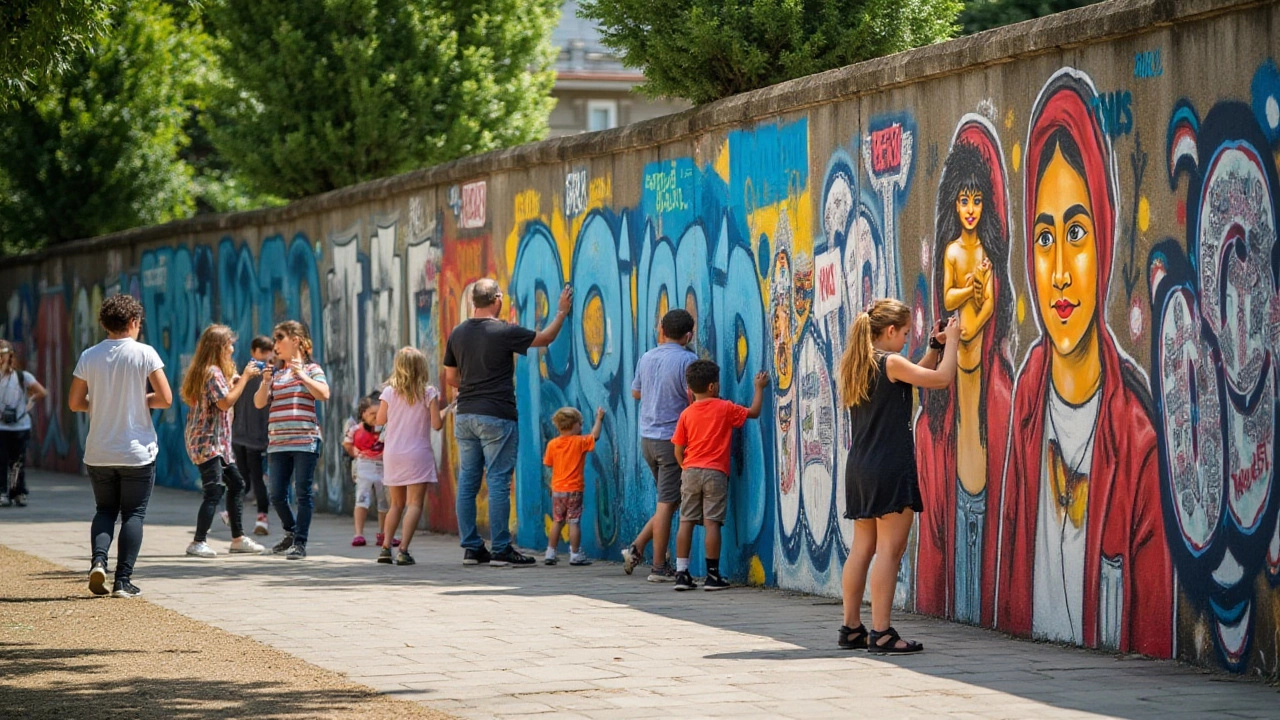
Consequences of Illegal Graffiti
The debate over whether wall graffiti is art or vandalism often overshadows the tangible consequences of creating it without permission. One immediate repercussion is the legal penalty. Many jurisdictions classify graffiti as an act of vandalism, which can carry heavy fines or even jail time. For instance, in some parts of the United States, graffiti artists can face penalties of several hundred to thousands of dollars, depending on the extent of the damage assessed by the court. Often, young artists are required to perform community service as a form of restitution, cleaning up graffiti or engaging in other municipal improvement projects.
The legal aspect doesn't stop at mere financial consequences. A criminal record can severely impact an individual's future, affecting job prospects, college admissions, and even certain civic rights. Employers and academic institutions often conduct background checks, and a history of vandalism might raise red flags about an individual’s respect for rules and property. Consequently, this black mark can divert a young artist's trajectory, limiting opportunities that might have otherwise been available.
Illegal graffiti can also have economic ramifications for the affected communities. Cities often allocate substantial budget portions to clean up graffiti, funds that could otherwise fuel public projects or improve community services. For example, it's estimated that New York City spends millions annually on graffiti removal, a significant investment that highlights the financial burden graffiti can impose. These costs are often passed down to taxpayers, sparking debates over whose responsibility it should be to handle these expenses.
"Graffiti vandalism costs Australian communities, councils, and government over $2 billion annually," notes a report from the National Graffiti Network, underlining the extent of its economic impact.
There are also social consequences tied to illegal graffiti. While some see it as a form of cultural expression, others may interpret it as a sign of urban decay, associating its presence with increased crime rates and neglect. This perception can affect property values in areas where graffiti is prevalent. Potential buyers might be deterred, fearing a lack of security or community engagement, which can stagnate or depress real estate markets. Neighborhood reputations are delicate and can take years to rebuild, meaning graffiti, despite its artistic value, can contribute to long-standing stigmatization.
The Clash Between Art and Law
The tension between creative freedom and property rights often fuels the conflict surrounding wall graffiti. On the one hand, artists argue that graffiti provides a voice to the voiceless, offering a public platform that traditional art spaces may deny. On the other, property owners and municipalities emphasize the importance of consent and the right to dictate what appears on their walls. This inherent conflict questions whether artistic expression justifies encroaching upon private or public property without obtaining permission. Ultimately, illegal graffiti is a complex issue with farther-reaching impacts than a mere splash of color on a cityscape. As communities seek solutions, the challenge remains to balance artistic freedom with respect for legal and social parameters.
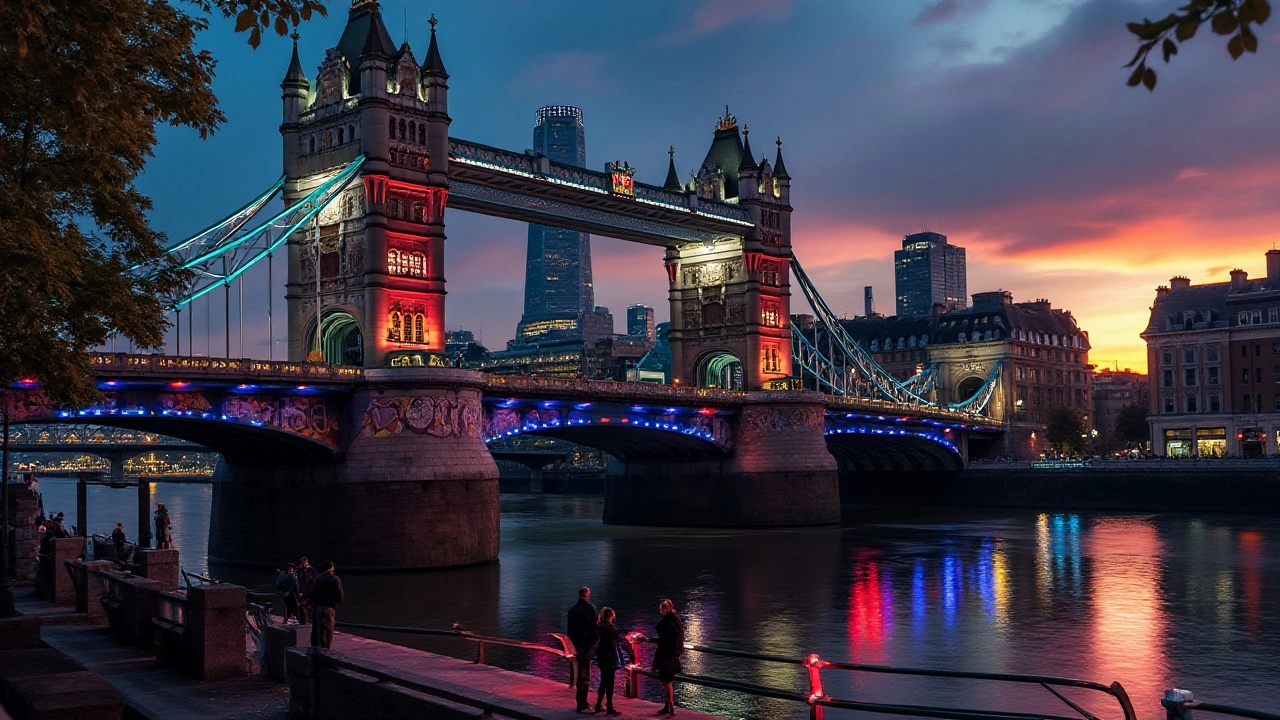
Balancing Art with Legal Boundaries
Graffiti, at its core, is an act of artistic rebellion—an attempt to communicate messages without the traditional constraints of galleries or controlled spaces. Yet, this freedom often clashes with laws designed to maintain public order and private property. The tension between creation and regulation is an ongoing dance that requires understanding and compromise from both artists and authorities. Recognizing where artistic expression becomes unlawful is crucial in balancing the scales between cultural significance and lawful ownership. Many cities have tried to create legal spaces for graffiti artists, which are designated areas where street art is allowed and even encouraged. Melbourne’s Hosier Lane or San Francisco’s Clarion Alley are prime examples, turning once-blank canvases into vibrant hubs of expression and creativity.
These initiatives not only prevent unwanted vandalism but also invite artists to hone their skills without legal repercussions. However, the challenge remains in determining who gets to decide what constitutes acceptable wall graffiti and who holds the rights to public spaces. Some governments are working alongside artists to resolve this issue, crafting policies that appreciate the nuanced nature of street art. According to a study published by the Institut für Kunst und Forschung, cities with designated graffiti areas saw a 29% reduction in illegal tagging, suggesting that both graffiti artists and city councils can benefit from these legal initiatives.
Still, conflicts persist, as not all urban planners are open to recognizing graffiti as a legitimate art form. Many argue that making graffiti legal dilutes its raw and subversive identity. They worry about losing the spirit of rebellion intrinsic to graffiti’s culture. Artists like Banksy have famously voiced concerns about their pieces being commodified or co-opted into mainstream art. As the debate evolves, urban landscapes become a reflection of these discussions, transforming based on a community’s willingness to embrace or eradicate graffiti. In an article from The Guardian, it states that "street art is a measure not just of cultural currency, but tolerance," highlighting the role of graffiti in challenging societal norms.
Encouraging dialogue between artists, policymakers, and the public is essential. Education campaigns are an upcoming trend, aimed at informing both artists about the legal implications of their work, and communities about the artistic value graffiti holds. By fostering open channels of communication and mutual understanding, it may be possible to maintain the dynamism of street art while respecting legal boundaries. Legal murals, commissioned works, and graffiti festivals are ways in which the gulf between individual expression and communal rights can be bridged.
Ultimately, a thoughtful consideration of graffiti's dual nature—as both art and action—is necessary. The balance is tricky, as each city has its unique cultural identity and legal framework. With the right approach, wall graffiti can thrive not just as an artistic endeavor, but as a communal experience that respects both the artist's vision and the public's rights.

